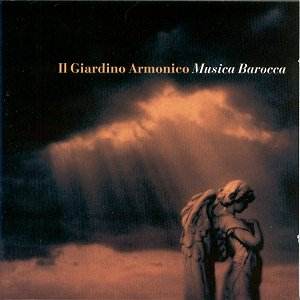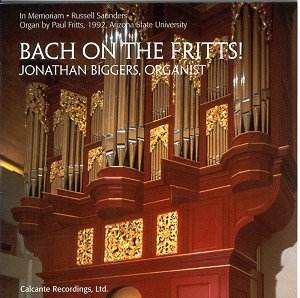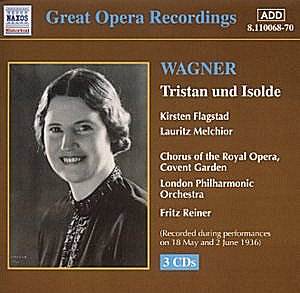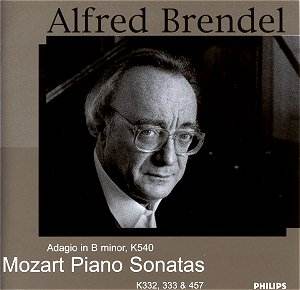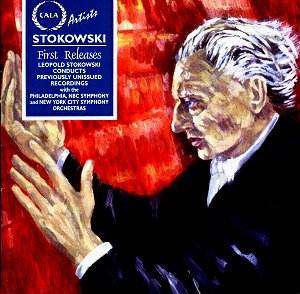 Composer: Leopold Stokowski
Composer: Leopold Stokowski
Works: La Marseillaise, Serenade (Schubert), Saltarello, Balance Test March, Oh, Susannah, Pastoral Symphony from Messiah, Dance of the Seven Veils from Salome, Solitude, Sunset Reflections from Adirondack Suite, Marche Slave, Etude in C sharp minor, Tyrolean Dances, Romeo and Juliet Fantasy Overture
Performers: Philadelphia Orchestra, NBC Symphony Orchestra, New York City Symphony Orchestra
Recording: 1927-1944, previously unreleased
Label: Cala CACD 0502
Leopold Stokowski’s legacy as a conductor is often intertwined with his innovative interpretations and arrangements, as well as his lavish orchestral sound that stretched the boundaries of traditional performance practices. This collection, “First Releases,” offers a fascinating glimpse into Stokowski’s artistry through a selection of previously unreleased recordings made between 1927 and 1944. It showcases not only the versatility of Stokowski as an interpreter of the standard repertoire but also his penchant for the eccentric, reflecting the vibrant musical landscape of the early 20th century.
The opening track, a spirited rendition of “La Marseillaise,” introduces listeners to Stokowski’s characteristic flair for theatricality and engagement with the audience. The performance is imbued with a sense of joie de vivre, a quality that Stokowski often harnessed in concert settings. The Philadelphia Orchestra’s playing is fresh and vivacious, though the informal nature of the concert suggests a certain level of playful abandon rather than precision. This haphazard charm is echoed in the Balance Test March, a curious and raucous piece that serves as a testament to Stokowski’s whimsical side. While some might find its chaotic energy disconcerting, others will appreciate its unabashed exuberance.
Stokowski’s treatment of the Handel Pastoral Symphony is a significant contrast, showcasing his ability to maintain a lyrical line while allowing for lush string textures to unfold at a deliberate tempo. The ebb and flow in dynamics is particularly striking, with Stokowski’s control over orchestral balance and the overlapping of string parts creating a rich tapestry of sound that, while historically anachronistic, feels entirely faithful to the emotive landscape of the work.
The recordings of Richard Strauss’s Dance of the Seven Veils are especially noteworthy, as they provide a rare glimpse into Stokowski’s approach to Strauss’s music. The performance is both idiomatic and vibrant, characterized by a lush orchestral palette that captures the sensuality of the score. Despite the inherent challenges of recording this repertoire in the early 20th century, the engineering quality here is commendable, allowing the rich sonorities of the orchestra to resonate effectively without compromising clarity.
Tchaikovsky’s Marche Slave is delivered with an exuberance that can border on overwhelming. Stokowski’s penchant for dramatic, almost bombastic interpretations shines through, appealing to those who revel in the grandiosity of orchestral sound. This performance may not sit comfortably with purists, yet it undeniably reflects Stokowski’s vision of Tchaikovsky as a composer whose music demands bold expression. The Romeo and Juliet Fantasy Overture, another highlight, showcases Stokowski’s ability to convey subtle emotional nuance, particularly in the quieter passages that he so favored. The recording’s quiet ending—a hallmark of Stokowski’s interpretation—adds a contemplative touch that lingers long after the final note.
The array of arrangements included in this compilation, notably the Scriabin Etude, demonstrate Stokowski’s flair for transforming existing works into lush orchestral canvases. Each arrangement is marked by a unique orchestration that enhances the original material while remaining respectful to its intent. The sound quality, given the age of these recordings, is impressive, capturing the depth and color of the orchestral sound world Stokowski cultivated.
This collection is a treasure trove for aficionados of Stokowski and offers insights into his multifaceted artistry. The blend of light-heartedness and serious musicianship across these recordings encapsulates the spirit of an era marked by both innovation and tradition. Cala’s dedication to preserving these historical documents is commendable, ensuring that Stokowski’s remarkable contributions to the orchestral repertoire are not forgotten. The performances, while occasionally uneven in execution, reflect an interpretive boldness that remains compelling and relevant today.
